Exploring the Traditional Dress of the UAE's Culture
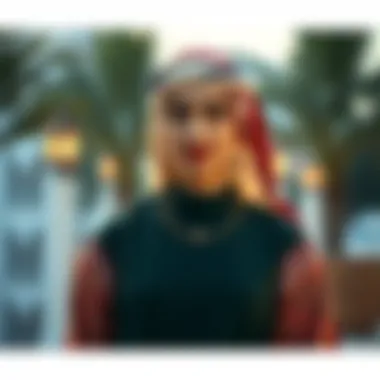
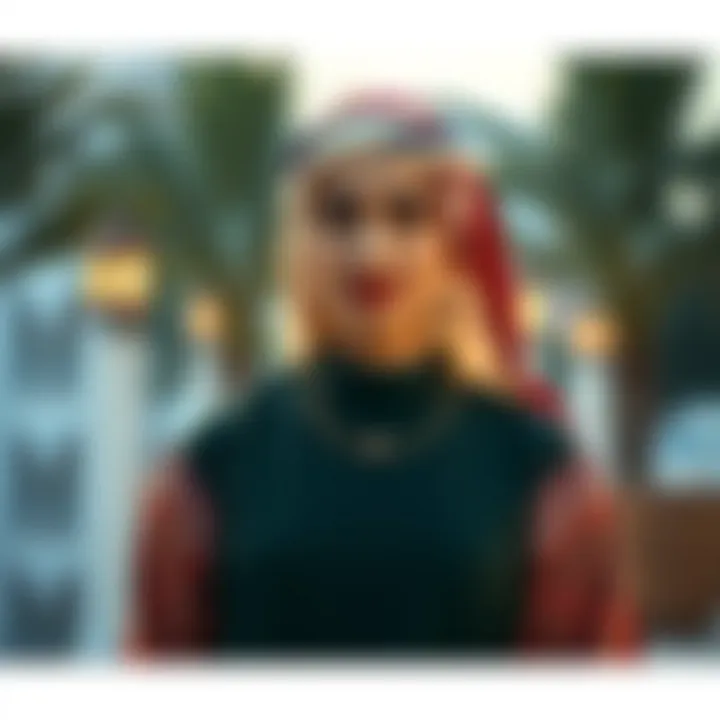
Intro
The traditional dress of the United Arab Emirates (UAE) offers a fascinating glimpse into the country's cultural identity and values. It reflects both historical influences and contemporary innovations, showcasing garments that have been worn for generations. With the rapid modernization of society, one might think these traditional outfits would fade into obscurity, but they remain a vital expression of heritage, pride, and national identity.
In this article, we will embark on a journey to explore the intricate details of these garments worn by both men and women. From the flowing abayas and kanduras to the vibrant colors and patterns, each piece carries a story. We will also delve into the regional differences that contribute to this sartorial diversity, shedding light on how economic developments and social changes impact the wearers’ choices. In doing so, we will uncover not just the clothing but the very essence of what it means to belong to a society that holds its traditions dear while embracing the future.
Let's navigate the historical evolution of these garments, discussing their significance and symbolism in UAE society. Through our lens, we will gain insights that go beyond fashion; we'll uncover layers of meaning that enhance our understanding of the people and culture of this vibrant region.
Preamble to Traditional Dress in the UAE
Traditional dress in the United Arab Emirates is not merely about fabric and design; it is a powerful representation of the country’s cultural heritage and identity. In a world where globalization appears to dilute local customs, the attire worn by Emiratis stands as a stronghold of the nation's values, beliefs, and social structures. This section will discuss how traditional clothing, which incorporates both practical and symbolic significance, plays a crucial role in preserving the Emirati identity amidst modern influences.
Understanding Cultural Heritage
The traditional garments of the UAE are steeped in history, reflecting not just the climate and geography of the region, but also the values that have been honed over generations. From the flowing kandura worn by men to the elegant abaya draped on women, each piece tells a story rooted in Emirati customs.
These outfits facilitate a connection with the past and highlight the UAE's rich tapestries of tribal alliances and historical narratives. Through fabric choices—such as the woolen cloth for colder weather, or lightweight materials for the hot desert—a sense of practical heritage is blended with aesthetic beauty.
Every stitch and pattern holds significance, offering insights into the wearer’s status, regional origins, and familial ties. > "Traditional dress in the UAE is a reflection of societal values and nuances that define the Emirati persona."
Significance in Modern Society
In contemporary society, traditional dress serves multiple roles. It acts as a visual reminder of the customs and traditions that form the bedrock of Emirati identity, while also influencing various aspects of social interaction and cultural pride. In public gatherings or ceremonies, wearing traditional clothing is a way of honoring one’s lineage and community.
In recent years, the global fashion industry has taken notice of the striking aesthetics of Emirati attire, leading to a fusion of styles in runway fashion and everyday wear. Local designers are now blending traditional elements with modern tastes, leading to a renaissance in cultural attire that remains firmly rooted in heritage while appealing to a younger audience.
Research shows that embracing traditional dress can have positive psychological effects on individuals, fostering community cohesion and reinforcing cultural identities, especially among the youth. This melding of old and new epitomizes the uae's pursuit to honor its past while navigating the complexities of modernity.
Traditional Clothing for Men
The traditional clothing for men in the United Arab Emirates is more than just garments. It carries deep-rooted cultural meanings and plays a pivotal role in the identity of Emirati men. As the region rapidly modernizes, these traditional outfits remain emblematic of national pride and cultural heritage. Understating the importance of men’s traditional clothing in this context allows one to grasp how society balances heritage with modernity.
The Kandura, a long white robe that reaches the ankles, is one of the cornerstones of men’s attire. This piece is not just a clothing item but a representation of dignity and modesty. Its simple yet elegant design, made often from light cotton or linen, is ideal for the hot desert climate. As you venture through the bustling streets or tranquil sand dunes, seeing men adorned in this garment instantly evokes a sense of cultural ambiance.
Another significant element of traditional male attire is headgear, specifically the Ghutrah and Agal. The Ghutrah is a square piece of cloth, usually in white or checkered patterns, draped over the head, serving practical purposes against the sun while also showcasing Emirati identity. Accompanied by the Agal—an intricate black cord—it holds the Ghutrah in place. This combination represents not just an adherence to cultural practices but also a flair for personal style among men.
Lastly, we cannot overlook footwear, particularly the traditional sandals commonly referred to as Na’al. These sandals are typically made from leather and are designed to be both practical and comfortable in the sandy terrain of the UAE. Their minimalist design complements the Kandura, adding to the overall aesthetic of traditional male attire.
The interweaving of these clothing items encapsulates the essence of Emirati culture and offers a window into the values the community holds dear. Through examining these elements, we gain greater insight into how traditional clothing continues to shape the social fabric of the UAE today.
The Kandura: Design and Features
The Kandura stands as an iconic representation of traditional male attire across the Emirates. Typically fashioned in pure white, it embodies the virtues of simplicity and elegance, making it a favored choice among Emirati men. Besides its striking appearance, the Kandura is tailored to suit the arid climate of the region. Light and airy materials ensure that men remain comfortable despite the high temperatures.
The design compliments various body types. Often, the fabric is of high quality, showcasing intricate embroidery along the cuffs or collar, which some wear during special occasions.
The Kandura not only serves as protective clothing but also signifies a deep connection to Emirati culture and values.
As the layers of this piece are worn, they tell tales of tradition and history, reflecting the pride Emiratis take in their heritage. It is common to see variations of this garment with unique regional tweaks, showcasing local culture while still adhering to the overarching traditional aesthetic.
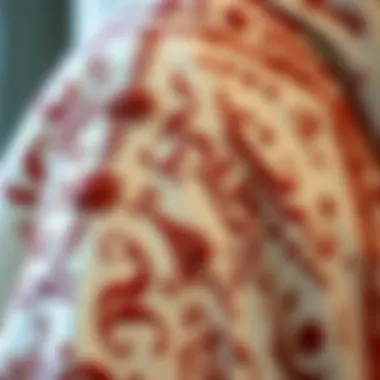
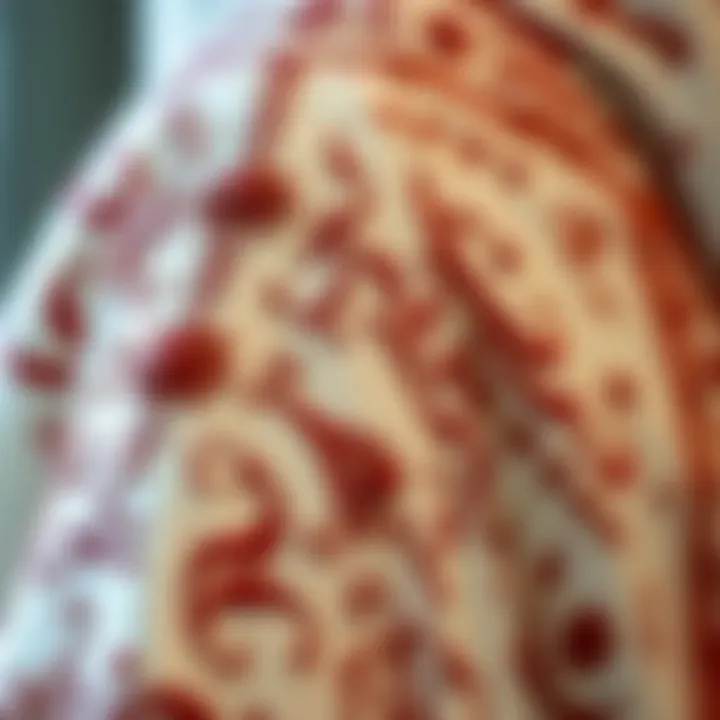
Headgear: The Ghutrah and Agal
No discussion of men’s traditional dress would be complete without mentioning the essential headgear—the Ghutrah and Agal. The Ghutrah is a versatile cloth, usually woven from cotton, notorious for its cooling properties; it is folded and worn stylishly over the head.
Accessories like the Agal are equally significant. It is a simple yet effective tool to keep the Ghutrah in place, offering both functionality and style. The black Agal adds a contrast to the white or patterned Ghutrah, emphasizing the wearer’s attention to detail and adherence to tradition. The way these items are worn can indicate a range of social cues, from the formality of the occasion to personal style preferences.
While culturally significant, these pieces also reflect broader influences and are often seen in the modern urban fashion landscape. Fashion designers continue reinventing traditional themes to fit contemporary styles, enhancing the appeal of the Ghutrah and Agal among younger generations. This balance of tradition and modernity speaks volumes about the Egyptian male’s evolving sartorial identity.
Footwear: The Traditional Sandals
The Na’al, or traditional sandals, complete the Emirati man's look with elegance and practicality. Crafted primarily from leather, these sandals are designed to endure the rigors of the desert terrain while still looking stylish. One may find a range from plain to intricately designed options, allowing for individual expression even in footwear.
Wearing sandals is not just about comfort; they foster a connection to the earth, symbolizing the Emirati lifestyle’s harmony with the surroundings. Indeed, they compliment the long flowing fabric of the Kandura, maintaining the traditional aesthetic while offering comfort.
Different variations exist based on regions and occasions. Some sandals sport unique designs that incorporate local artistry, making each pair a representation of cultural craftsmanship. Thus, traditional sandals play a crucial role in linking the wearer to the land, culture, and history of the UAE.
Traditional Clothing for Women
Traditional clothing for women in the UAE not only highlights the rich cultural heritage but is also a profound reflection of identity, values, and social status. If you take a closer look, you would see that the garments worn often convey a sense of dignity and elegance, while also allowing women to express their individuality in subtle yet impactful ways. The key pieces of traditional attire are not just clothing but emblematic markers of history, lifestyle, and personal beliefs, resonating deeply within the social fabric of Emirati society.
The Abaya: A Symbol of Elegance
The abaya stands as a powerful symbol of elegance and modesty in Emirati women's fashion. This long, flowing robe, often in black, serves multiple purposes. Traditionally, the abaya was designed to protect women from the harsh desert climate and to meet cultural expectations of modesty. Today, it combines practicality with style, often enhanced with intricate designs or unique embellishments that elevate it well beyond mere functionality. Modern interpretations of the abaya feature brighter colors and creative patterns, allowing for personal expression while remaining rooted in tradition.
In many ways, the abaya represents a canvas—its simple design can be adorned with artisanal embroidery, beads, or even high-quality fabric, making it uniquely personal. Typically made from lightweight textiles, it provides comfort in soaring temperatures. Moreover, its versatility allows women to wear it for various occasions, from everyday errands to lavish celebrations. Notably, you might notice that the abaya is often paired with distinct accessories to enhance its allure and sophistication.
"The abaya is not just a garment; it's a cultural statement that holds great significance for women in the UAE."
Shayla and Lihef: Headscarves and Accessories
Complementing the abaya are the headscarves known as the shayla and lihef. These accessories serve dual purposes: offering a modest cover and enhancing style. A shayla is a long scarf that can be draped in various elegant ways, perfectly suited for daily wear or formal gatherings. It's often crafted from light materials that provide comfort while framing the face beautifully. Women often choose colors and patterns that reflect their personal taste, transforming a simple garment into an emblem of creativity.
In contrast, the lihef is usually a larger shawl, often used during special occasions or significant celebrations. The fabric is typically more luxurious, adorned with exquisite patterns and often made from heavier materials. Wrapped around the shoulders or draped over the head, the lihef adds a layer of richness to the overall outfit, epitomizing elegance and tradition.
Embroideries and Traditional Designs
The intricate embroideries and traditional designs featured on women’s garments showcase the deep cultural roots and artistic prowess of the region. Embroidery serves not merely as decoration but as a testament to the artisan's skills and heritage. These delicate patterns often tell stories of cultural significance, with motifs reflecting nature, spirituality, or social status.
Women are skillful in using bright threads and colorful beads to create beautiful designs that highlight the hem of an abaya or the border of a headscarf. The traditional methods of hand embroidery, passed down through generations, introduce a personal touch to each piece, ensuring that no two garments are exactly alike. This penchant for craftsmanship also extends to shoes and bags, where traditional textile patterns might be replicated, uniting the entire ensemble.
In summary, traditional clothing for women in the UAE is a rich tapestry woven with history, identity, and modern influences. The abaya, complemented by the shayla and lihef, along with intricate embroideries, creates a visual narrative of a culture that embraces both tradition and individuality.
Regional Variations in Traditional Dress
Understanding the regional variations in traditional dress within the UAE is essential for a thorough grasp of how geography, history, and culture intertwine to shape identities. Each emirate boasts its own distinctive style, signifying not just personal preference, but also the stories, traditions, and influences that define its people. Acknowledging these nuances deepens our appreciation for the rich tapestry that constitutes Emirati culture. Moreover, these differences speak to the broader cultural dialogue and exchange taking place in the region, offering insights into both heritage and modern society.
Differences Across the Emirates
In the UAE, the traditional dress is not a monolith; it varies significantly across each emirate. For instance, in Abu Dhabi, men typically wear a white kandura with a black agal, while in Dubai, a slightly looser version may be more prevalent. The colors and adornments of women’s abayas also fluctuate depending on the locality. For example, in Fujairah, you might spot women’s dresses embellished with bold prints and vibrant colors, as opposed to the more subdued tones often favored in Sharjah.
This variation in style does not merely pertain to aesthetics. Each emirate’s traditional dress serves as a canvas on which social status, profession, and even historical influences are painted. In Ras Al Khaimah, for example, the emphasis on embroidery may reflect the area's historical trade routes and interactions with neighboring cultures.
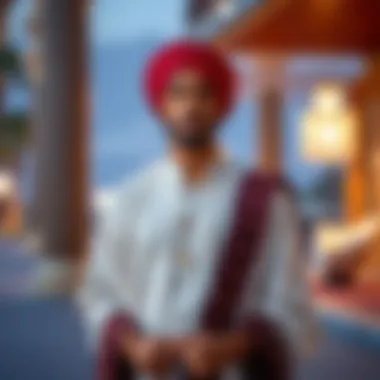
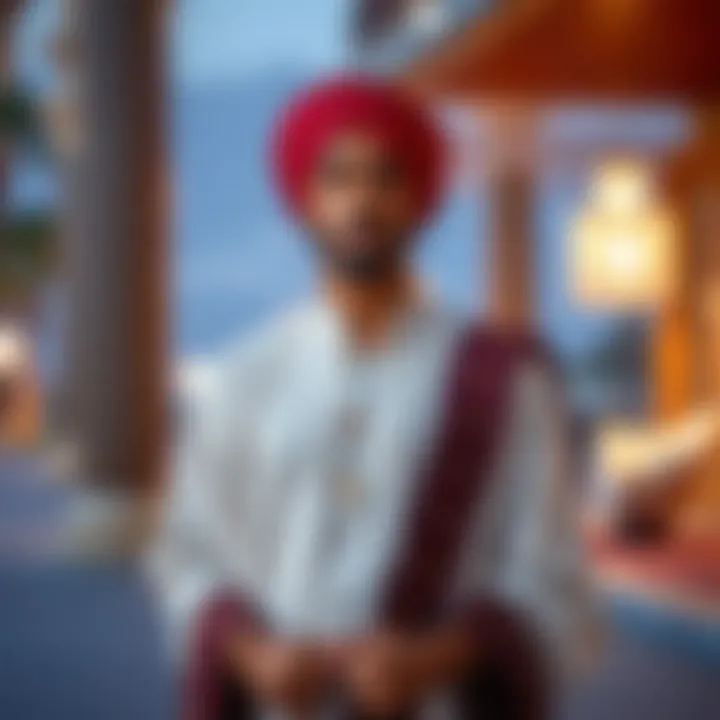
- Abu Dhabi: Predominantly white and simple styles, suited for the hot climate.
- Dubai: Innovative and fashionable; designs sometimes incorporate modern elements and colors.
- Ajman: Focused on traditional workmanship, featuring intricate patterns and materials.
- Fujairah: Brighter colors and patterns that draw from the local environment.
- Sharjah: Blends traditional with contemporary, showcasing elegance.
These distinctions play a pivotal role in upholding the unique cultural identity of each emirate while fostering a sense of pride among its inhabitants.
Influence of Neighboring Cultures
The traditional dress of the UAE has not developed in a vacuum; it has been shaped by a myriad of neighboring cultures. Countries like Oman, Saudi Arabia, and even Iran have left their marks, creating a dynamic cross-cultural exchange over centuries.
For example, while the kandura is a staple in the UAE, its structural design echoes those found in similar garments worn in Saudi Arabia. Likewise, the intricacies of the abaya are influenced by various styles borrowed from surrounding regions, making them both local and global at the same time.
In addition, migratory patterns and trade routes have facilitated the exchange of textile techniques and embellishments, further enriching the traditional garb. You might find traditional Indian embroidery on some women's abayas in Dubai, highlighting how intercontinental interactions influence local dress.
“Cultural identity is like a long woven thread, where each piece adds to the fabric of who we are.”
Thus, regional variations in traditional attire are not just reflections of local aesthetic preferences but are also indicative of a broader narrative of interaction and adaptation. By recognizing these influences, we appreciate the complex heritage that continues to shape the UAE’s national dress today.
The Evolution of Traditional Clothing
The journey of traditional clothing in the UAE is akin to a tapestry woven with threads of history, culture, and innovation. It’s essential to understand how this evolution reflects the broader socio-cultural dynamics at play within the region. Traditional garments have not only served utilitarian purposes but have also acted as significant identifiers of heritage and regional identity.
The importance of studying the evolution of traditional clothing lies in recognizing how it adapts over time while holding on to its roots. This evolution illustrates how cultural practices and global trends influence attire in fundamental ways. Such an exploration provides insight into how clothing can signify respective values, social status, and even personal expression.
Historical Influences on Fabric and Design
When looking back at the roots of clothing in the UAE, one can see how environmental elements shaped the choice of materials and designs. Historically, the arid climate led to a preference for lightweight fabrics that could provide comfort yet offer some protection from the sun.
- Cotton and Silk: Early Emiratis often turned to cotton and silk that were obtained through trade routes. These fabrics became popular for their breathability and the ability to endure the heat.
- Handwoven Textiles: The use of handwoven textiles, especially for women’s garments, is notable. This practice not only involved skill but also allowed for artistry in patterns and colors that reflected the local flora and fauna.
- Natural Dyes: Fabrics were often dyed using natural dyes derived from local plants and minerals. This gave the textiles a unique identity, differing from other regions.
The design and structural elements of garments also evolved due to influences from neighboring cultures and tribes, resulting in a hybrid style that represented the melting pot of traditions within the UAE. The adaptation of features from surrounding territories, such as the use of specific embroidery styles, showcases the interconnectedness of regional fashion.
Adaptations to Contemporary Fashion Trends
As global fashion trends increasingly infiltrated local markets, traditional clothing could not help but evolve. The past few decades have seen a remarkable shift where traditional dress began integrating more modern aesthetics without losing their core attributes.
- Fusion with Western Styles: A blend of Western fashion and traditional attire has emerged. For instance, the abaya has been redesigned to include brighter colors and contemporary cuts, attracting younger generations.
- Sustainability Influence: There's an increasing awareness of sustainability among consumers, which has led to a renaissance of traditional practices. Brands now source local materials for their garments, thus encouraging eco-friendly fashion statements that honor heritage.
- Fashion Weeks and Shows: Events such as Dubai Fashion Week have become platforms where traditional attire is showcased alongside high fashion. Designers are exploring innovative ways to reinterpret traditional clothing, using it as a canvas to express modernity while respecting cultural significance.
The evolution of traditional clothing in the UAE is a vivid reflection of a society in flux. It encapsulates the profound respect for cultural roots while embracing the winds of change. This phenomenon illustrates that traditional dress is not merely clothing but a dynamic expression of the UAE’s identity, heritage, and aspirations.
"Fashion is about the conversations between tradition and innovation; it tells the story of where we come from and where we are going."
As investors, homebuyers, and cultural enthusiasts delve into these themes, understanding the evolution of traditional clothing offers a unique window into the intricate web of identity and values that shape the UAE today.
For further exploration of fabric influences, visit Britannica or to see cultural exchanges, check out Wikipedia on local textiles.
Traditional Dress in Special Occasions
Traditional dress in the UAE plays a pivotal role during significant events and gatherings, reflecting deep-rooted values and customs that have withstood the test of time. These occasions not only serve as a platform for showcasing cultural heritage, but they also highlight the artistry and craftsmanship embedded in traditional garments. From weddings to national celebrations, the choice of attire becomes a language through which people express identity, belonging, and pride.
Weddings and Celebrations
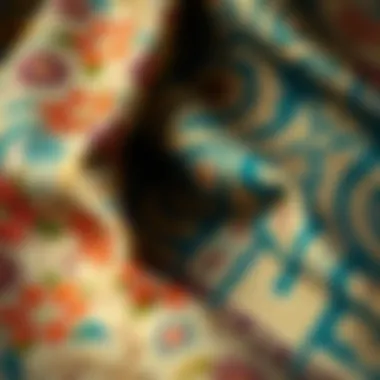
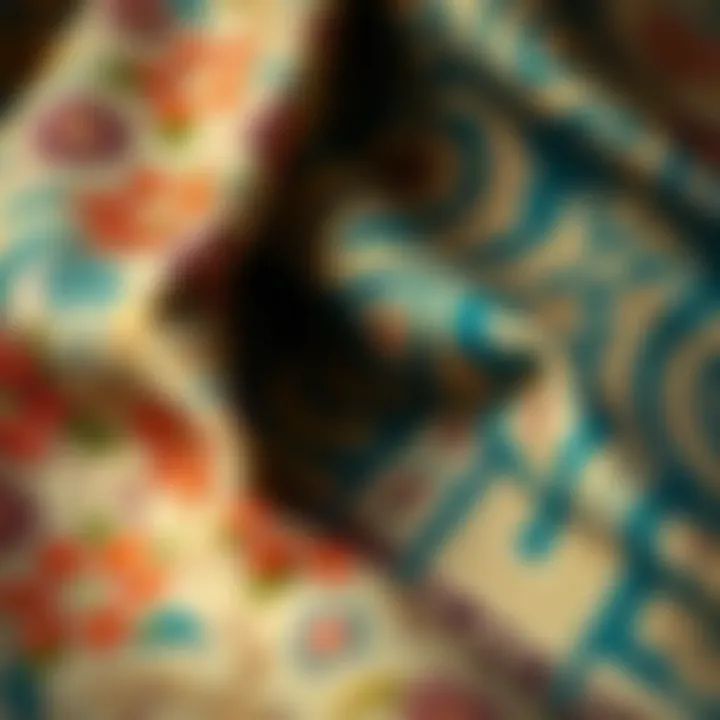
Weddings in the UAE are lavish affairs, marked by rituals that can stretch over several days, and the attire worn during these events is nothing short of spectacular. The kandura and the abaya take center stage in these celebrations, but it is the intricate designs and extensive embellishments that truly captivate.
- For men, a white or cream kandura is often adorned with decorative stitching on the cuffs or collar, which refers to family heritage and status. Grooms may also wear a ghutrah secured by an agal, complementing the elegance of the kandura.
- For women, the abaya is often personalized with elaborate embroideries, sequins, or even gemstones. Traditional colors such as black remain prominent; however, new shades like deep purple or burgundy are becoming popular, allowing individuality to shine through. The shayla, a type of headscarf, is frequently embellished to align with the aesthetic of the outfit, completing the elegant look.
The essence of these garments is deeply intertwined with the celebrations they grace, dictating how joy, love, and unity are expressed through fabric. People often remark how a well-tailored garment can make one feel profoundly connected to their culture, evoking a sense of belonging during such momentous occasions.
Cultural Festivals and National Days
Cultural festivals and national days are occasions when the traditional dress is proudly displayed, often involving vibrant public celebrations that showcase the nation’s rich heritage. The attire reflects a collective identity that fosters unity among citizens.
During important festivals like Eid Al Fitr and Eid Al Adha:
- Families often opt for new, lavish outfits as a symbol of renewal and gratitude. Men typically wear their finest kanduras, while women don beautifully designed abayas, often in festive colors unique to the occasion.
For national days, such as the UAE National Day on December 2nd, residents adorn themselves in a sea of red, green, white, and black to embody national pride. Specially designed garments featuring the flag's colors and symbols come alive in the streets, demonstrating unity and celebration among Emiratis.
"Attending a national celebration in traditional dress connects me with my roots, making me feel part of something greater than myself."
– A local Emirati
Contemporary Perspectives on Traditional Dress
The traditional dress of the UAE stands at a fascinating crossroads where cultural heritage meets the modern world. In a society increasingly influenced by global narratives and fashion trends, the ways in which traditional clothing is perceived and worn today provide valuable insights into the shifting views of cultural identity. This section delves into how contemporary opinions on fashion are intertwined with the preservation of cultural symbols, offering a lens through which to view the evolution of attire that has long been integral to Emirati life.
Influence of Global Fashion Trends
The global fashion landscape has always been a melting pot of styles and influences. In recent years, this influence has extended its reach into the UAE, creating a dialogue between traditional and contemporary styles. Designers in the Emirates have started blending classic silhouettes with modern aesthetics, producing garments that maintain respect for local customs while appealing to a global audience. For example, the Kandura has seen variations in fabric choices, colors, and embellishments that cater to both traditionalists and modernists alike.
These adaptations often take the form of elaborate events such as Dubai Fashion Week, where local designers showcase innovative interpretations of traditional garments alongside international high-fashion brands. Consumers, especially younger Emiratis, are increasingly seeking pieces that reflect their identity whilst being trendy. This has led to a renaissance of creativity, where fashion houses merge traditional embroidery techniques with contemporary cuts.
"Fashion in the UAE isn’t just about clothes; it’s about expressing who you are in a modern world while honoring the heritage behind every stitch."
Sustainability in Traditional Fashion
As conversations around sustainability gain momentum worldwide, the UAE is not lagging. Traditional dresses, made from natural materials, embody a sense of ecological awareness that resonates with modern consumers who are looking for responsible fashion choices. The craftsmanship involved in creating traditional attire often highlights sustainable practices, such as local sourcing of fabrics and time-honored techniques that minimize waste.
More recently, designers have been shifting their focus toward creating sustainable collections that draw upon Emirati heritage. This includes using organic cotton and linen, as well as preserving traditional dyeing techniques that are eco-friendly. The movement not only reflects care for the environment but also supports local artisans who keep the skills alive.
Moreover, as part of broader efforts to promote sustainability, cultural institutions and fashion schools in the UAE are increasingly providing education around sustainable fashion practices. This educational push helps young designers understand the importance of merging tradition with modernity, ensuring that both the environment and cultural heritage are respected for future generations.
Finale and Reflection
In understanding the traditional dress of the UAE, one must recognize its inherent role in shaping identity and fostering cultural continuity. Traditional garments not only serve as personal attire but also act as visual narratives of collective heritage. This dual function makes the examination of these garments paramount, especially in the context of globalization where cultural symbols are at risk of being diluted or misrepresented.
The Role of Traditional Dress in Identity
Traditional clothing in the UAE stands as a powerful emblem of individual and national identity. Each piece reflects a history steeped in tradition, socio-economic status, and regional pride. For instance, the kandura worn by men is not mere fabric; it signifies belonging, values, and the resilience of Emirati identity. The design often varies slightly from emirate to emirate, highlighting subtle differences that indicate one's origin or social standing. This distinction makes traditional dress a poignant reminder of one’s roots.
In a society that is rapidly modernizing, wearing traditional attire can evoke a sense of nostalgia. Many Emiratis choose to wear their heritage proudly at corporate events or social gatherings. This practice underscores a commitment to upholding cultural values while remaining active participants in a globalized economy. The visual impact of traditional dress connects people to their ancestors and traditions, reinforcing notions of pride and unity.
Preservation of Cultural Heritage
Preserving traditional dress extends beyond fashion; it is a commitment to maintaining a culture’s essence. The UAE's garments are crafted with intricate techniques that embody a wealth of historical influence. Techniques such as embroidery are often passed down through generations, preserving not only the skills but also the stories they tell. This art form can be particularly noted during festivals or weddings, where dressing the part becomes especially significant.
Furthermore, educators and cultural institutions are taking steps to enhance awareness surrounding traditional clothing practices. Initiatives such as workshops and exhibitions allow for interaction with attire from different eras, promoting appreciation and understanding among younger generations. By educating the youth on the significance of these garments, a tangible link between the past and present is fostered.
"Cultural heritage is the bridge that connects us to our history, shaping our future."
The challenge lies in synchronizing the beauty of tradition with the pressures of modernity. While the world increasingly shifts toward casual or Western styles, ongoing efforts to celebrate and promote traditional dress address this potential dissonance.



